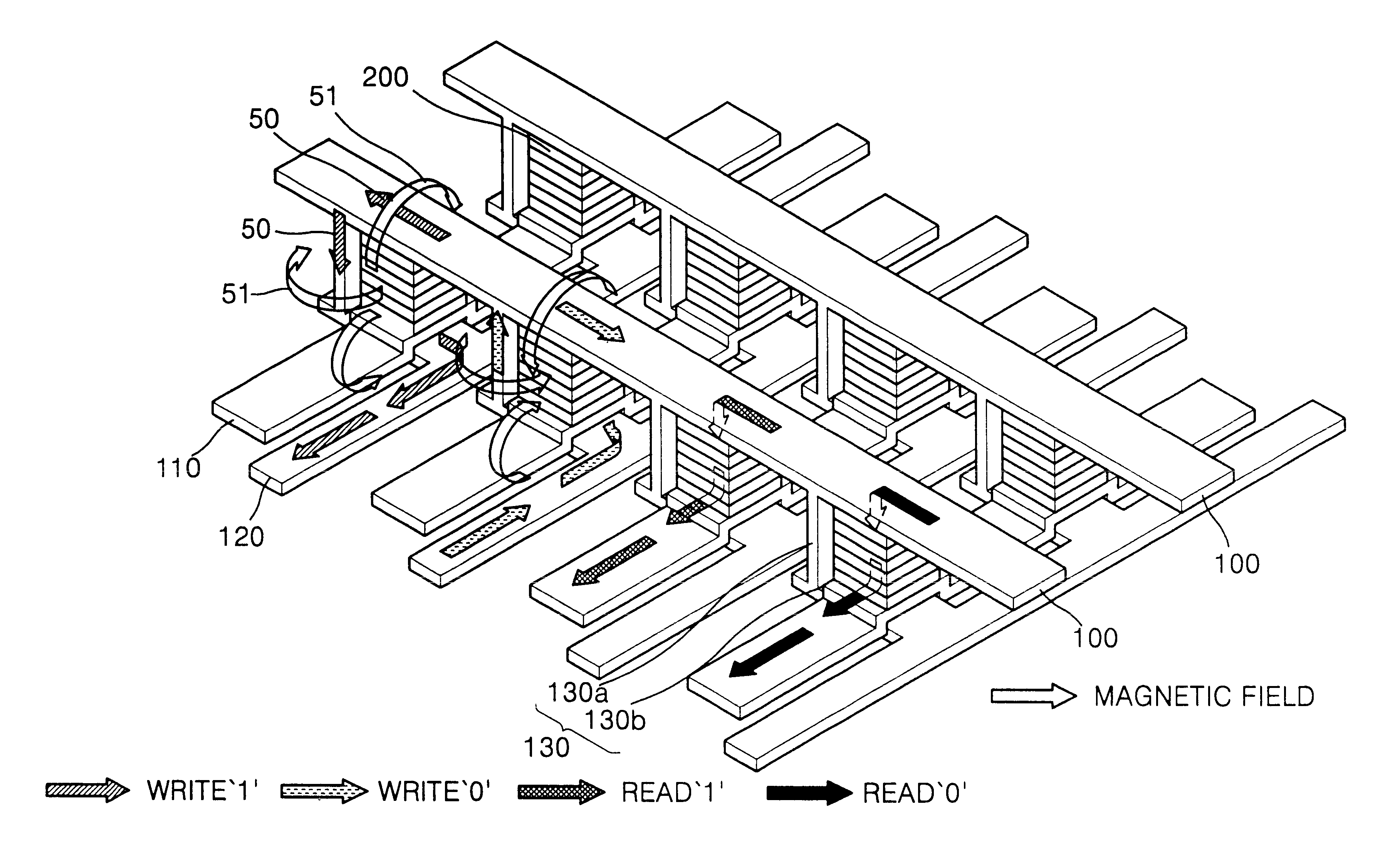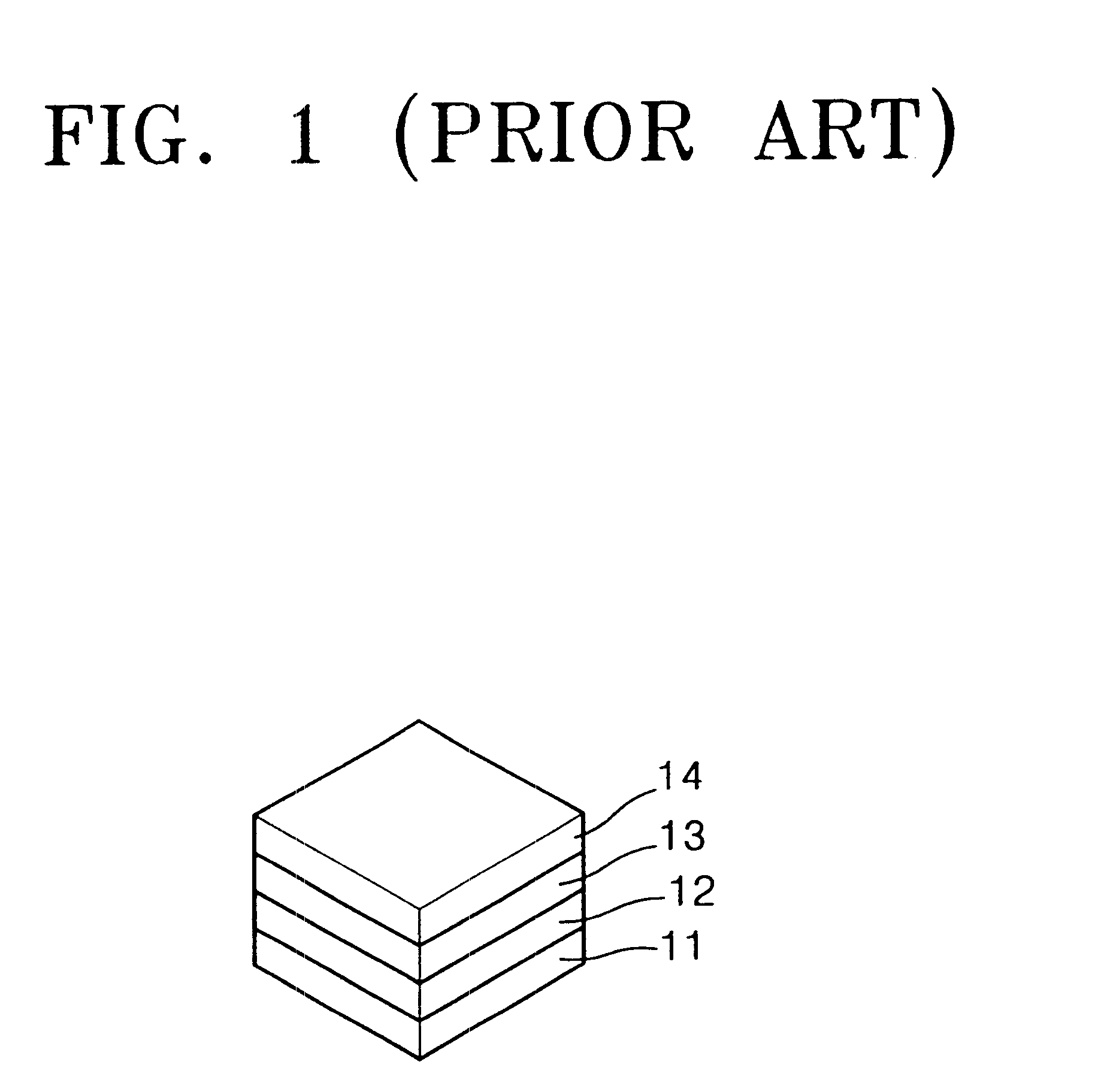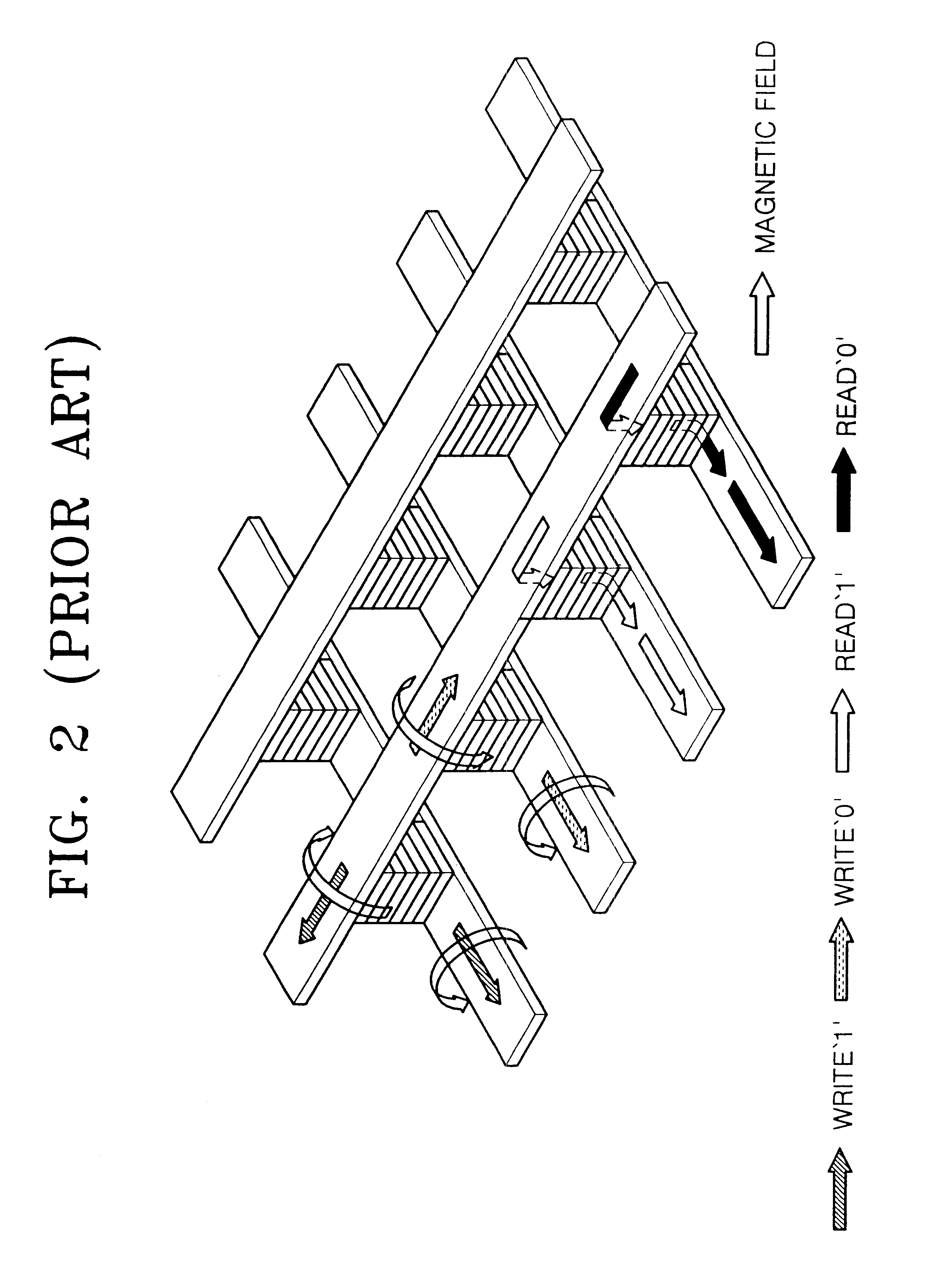Magnetic random access memory with write and read circuits using magnetic tunnel junction (MTJ) devices
- Summary
- Abstract
- Description
- Claims
- Application Information
AI Technical Summary
Benefits of technology
Problems solved by technology
Method used
Image
Examples
Embodiment Construction
Korean patent application number 00-5489, filed Feb. 3, 2000, and entitled: "Magnetic Random Access Memory with Write and Read Circuits Using Magnetic Tunnel Junction (MTJ) Devices," is incorporated by reference herein in its entirety. A preferred embodiment will now be described in detail with reference to the accompanying figures.
A magnetic random access memory according to the present invention includes read and write circuits for reading and writing the magnetic state of a free ferromagnetic layer, using magnetic tunnel junction (MTJ) devices. More specifically, the subject matter of the present invention provides an architecture which enables the magnetic memory to change the magnetization direction of a free ferromagnetic layer effectively by altering the structure of a write circuit of an MTJ formed at the cross point of word and bit lines, and has random access to the cross point of the two lines.
Referring to FIG. 4, which is a perspective view illustrating the structure of ...
PUM
 Login to View More
Login to View More Abstract
Description
Claims
Application Information
 Login to View More
Login to View More - R&D
- Intellectual Property
- Life Sciences
- Materials
- Tech Scout
- Unparalleled Data Quality
- Higher Quality Content
- 60% Fewer Hallucinations
Browse by: Latest US Patents, China's latest patents, Technical Efficacy Thesaurus, Application Domain, Technology Topic, Popular Technical Reports.
© 2025 PatSnap. All rights reserved.Legal|Privacy policy|Modern Slavery Act Transparency Statement|Sitemap|About US| Contact US: help@patsnap.com



